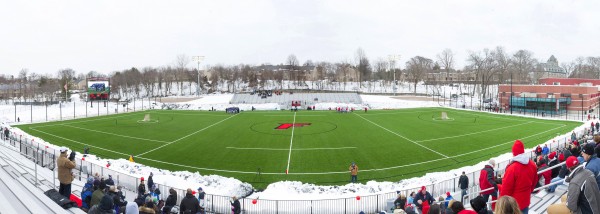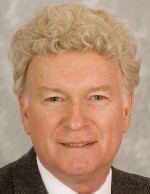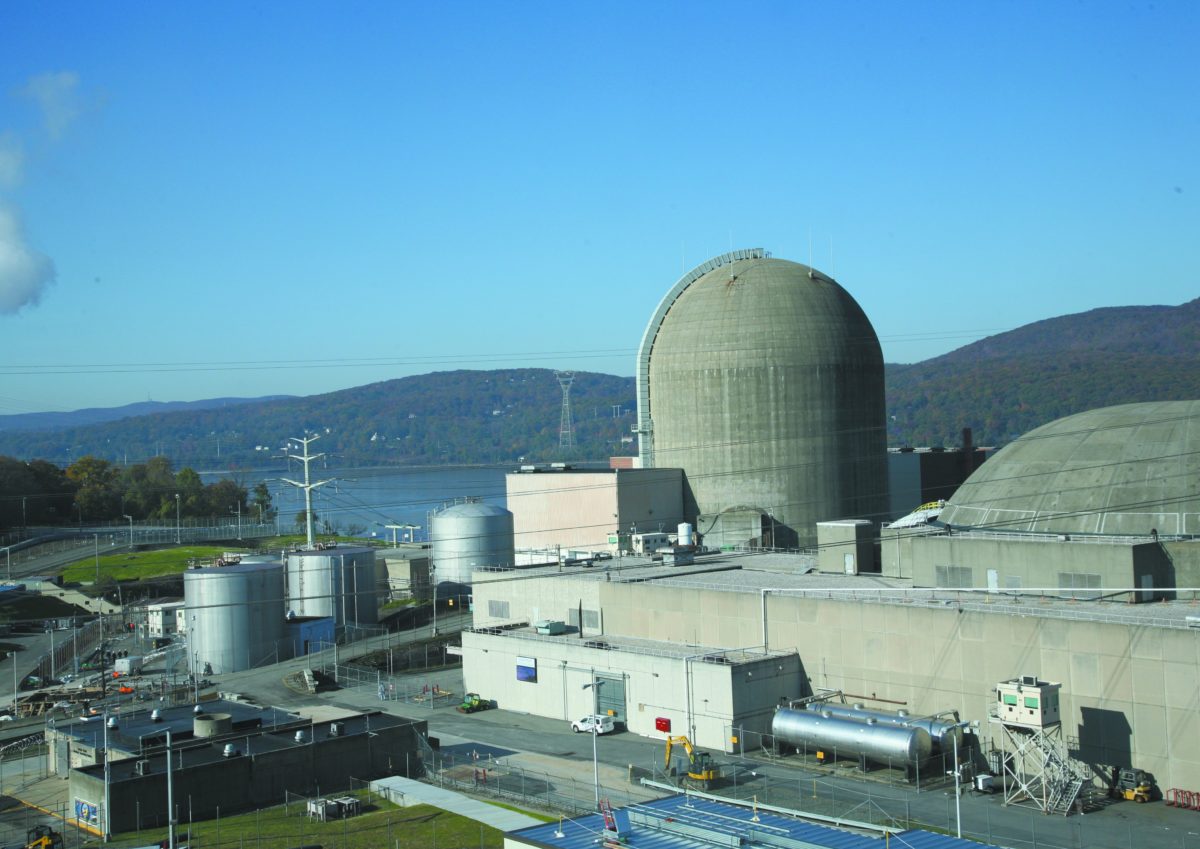Twenty-one years ago, when Gene Doris came to Fairfield University to take over as athletic director, the lacrosse team”™s facilities were markedly different than they are today.
“We still had a fledgling program, playing on a field with boundaries set up on the day of the game, temporary bleachers, no lights and a portable scoreboard,” Doris said.
The program has come a long way from those humble days, and with the opening this spring of Rafferty Field, a new $10 million lacrosse-only facility, Fairfield”™s program is an example of the growth of the sport across the country.
Named for former Fairfield University trustee Lawrence Rafferty, Class of ’64, his daughter Kathleen Rafferty Hay, Class of ’03, and his son Michael Rafferty, the stadium was designed by CannonDesign of New York City and built by Gilbane Construction on the site of Alumni Field.
Doris said the stadium, which will seat 3,500, features an artificial playing surface, lights, bathrooms, concession stands, a press box and locker rooms. Most important, Doris said, is that it was built entirely with donor funds.
“That”™s why the dedication will be one of the most significant dedications we”™ve had at this university,” Doris told the Business Journal. “This project wasn”™t bonded or financed in any way and it wouldn”™t have been possible but for the generosity of our donors.”
Over the past 15 years, the sport of lacrosse has seen a big rise in enrollment, according to a participation survey released by U.S. Lacrosse, the sport”™s governing body. In 2003, U.S. Lacrosse recorded 301,560 registered players nationwide. Ten years later, in 2013, that number had risen to 746,859, a nearly 150 percent increase.
That growth at the youth level has translated into the college game, with 60 new college programs starting play in 2013 and 39 more last year.
“It”™s really a sport that”™s taken off,” Doris said. “Just look at our roster ”“ we”™ve got kids from the West Coast.”
Fairfield and other so-called “mid-major” conference schools hope to leverage lacrosse”™s rising popularity into heightened attention and bigger revenues for their athletic departments. A unique combination of factors makes it possible for schools like Fairfield, which was ranked 18th in the country last season, to compete with big-name schools.
“It”™s similar to what hockey brings, but at a significantly lower cost,” Doris said. He said that aside from the 12.6 athletic scholarships that the school offers to recruited student athletes, the major costs are uniforms, travel and coaching salaries.
The Rafferty Stadium project began as an idea about four years ago, and was soon identified by the trustees as a project that the school wanted to move forward on, Doris said.
A facility like Rafferty Stadium should give Fairfield an edge in recruiting players to the school and fans to the program.
“Lacrosse has a very unique and passionate fan base,” Doris said, noting that some of the schools trustees are avid fans who attend both high school and college games every week during the season.
Ultimately, though, Rafferty Stadium will help build Fairfield”™s profile as a school by raising the profile of its lacrosse program.
“For schools like us, a mid-major, or Johns Hopkins, which is a Division III school that plays up in the Big Ten in lacrosse, to be able to compete against the Ohio States and Michigans is big,” Doris said. “It”™s a level playing field we just can”™t get in other sports, but in lacrosse, you have schools like ours that can win.”



















